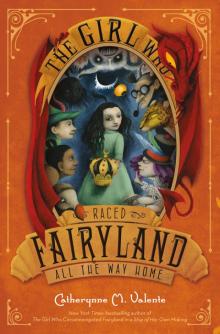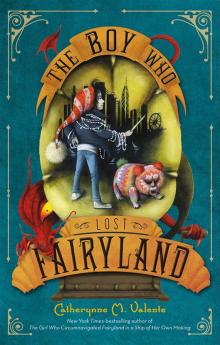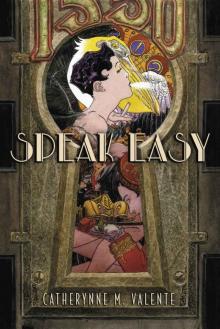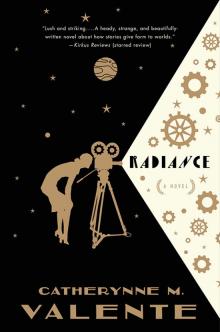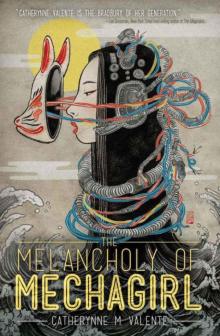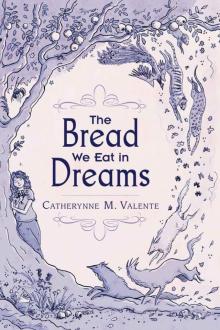


Feast
Anissa Helou
The way whole animals are cooked varies from one country to another. In the Emirates, the animal is marinated in a mixture of spices, rose water, saffron, and lemon juice, then wrapped in a wet straw mat and buried in a pit oven to roast slowly until the meat falls off the bone. Another spectacular way of cooking whole animals, which is reserved for grand occasions such as weddings or state occasions, is to roast whole baby camels in the seated position, usually by burying them in a very large pit oven to let them slow-roast overnight. The seated roast animals are then carefully lifted and placed on huge platters of rice that are laid on large tables in the majliss (reception area) or banquet hall. Guests gather around each roast camel and tear pieces of meat with their hands to eat with the rice. Once they have had their fill, they will make way for other guests (usually less important) and will go to wash their hands, and so on until all the guests have eaten. The leftovers are then taken back to the kitchens for the staff to also enjoy the occasion.
My first-ever experience of being served a whole animal was in Sharjah, one of the seven United Arab Emirates (UAE), where Sheikha Bodour al-Qasimi, the daughter of the Emir, had invited me to introduce me to the Emirates’ culinary delights. On my first day there, she had kindly arranged for a group of women to prepare a veritable feast in Sharjah’s Heritage Center. I still remember the roast baby goat, served on a bed of fluffy rice, and garnished with a wonderful sweet-savory mixture of caramelized onions, yellow split peas, and raisins. Absolutely exquisite! A few years later, I was invited to another amazing meal in Doha, Qatar, by Mrs. Al-Fardan, a member of a preeminent Qatari merchant family. She also served a roast baby goat, but hers was laid on a bed of fluffy saffron rice with only a plain garnish of crisp caramelized onions. Less complex but just as exquisite!
Domestic ovens are not large enough to take whole animals, even when they are small, so I have scaled down most of the recipes for whole animals to a shoulder, a leg, or a quarter animal. The dish may not look as spectacular but it will be just as delicious and will still impress your family and friends. And I have, of course, included recipes for many meat dishes using a variety of cuts, which people eat on normal days.
I have also included in this chapter recipes that use dairy, a direct product of the whole animal and an essential part of the diet of most Muslims. There are recipes for how to prepare various dairy products as well as recipes for using them in various dishes, yogurt being an important ingredient in the Middle East, Central Asia, and the Indian subcontinent.
Baby Goat Roast
AL-MASHWI OR AL-MADFUN
UNITED ARAB EMIRATES
Here is the home version of the Emirati madfun. Traditionally, the lamb was wrapped in a wet straw mat and cooked in a pit oven, with the mat placed directly on the embers. Obviously, the taste of mashwi roasted in a home oven is going to be different, but short of building a pit oven in the garden (if you have a garden), this recipe will be the closest you will get to a traditional madfun in a contemporary kitchen. The marinade is a heady mixture of rose water, saffron, spices, garlic, and lemon juice, which gives the meat a wonderfully exotic flavor without overpowering it. I often serve this roast with the Emirati Biryani.
SERVES 8 TO 10
1 baby goat or baby lamb (10 to 12 pounds/4 to 5 kg), a large leg of lamb, or a shoulder of lamb with part of the rib cage still attached
Juice of 2 to 3 lemons
Sea salt
FOR THE MARINADE
1 tablespoon b’zar (Arabian Spice Mixture)
1 tablespoon ground turmeric
1 teaspoon ground cardamom
1 teaspoon ground coriander
1 teaspoon ground cumin
1 teaspoon ground ginger
1 teaspoon ground dried lime
1 teaspoon finely ground black pepper
4 large cloves garlic, minced to a fine paste
Juice of ½ lemon
Good pinch of saffron threads, soaked for 15 minutes in ½ cup (125 ml) rose water
Emirati ghee or regular ghee or unsalted butter
FOR THE BASTING SAUCE
⅓ cup (60 g) seedless tamarind paste, soaked in 1 cup (250 ml) water
½ cup (125 ml) rose water
Good pinch of saffron threads
1 tablespoon b’zar (Arabian Spice Mixture)
Juice of 1 lemon
Sea salt
1. Rinse the goat and the head (if you were given one) under cold water—it is a good idea to soak the head for a few hours, changing the water regularly to get rid of all the blood. Pat dry with paper towels and rub both with the lemon juice and a little salt. If you are using other cuts, just pat them dry.
2. To make the marinade: Mix all the spices, the crushed garlic, lemon juice, and saffron rose water in a bowl. Brush the goat inside and out with the marinade. Brush a large roasting pan with a little ghee and place the goat in it. Cover loosely with foil and let sit for at least 1 hour to absorb the flavors.
3. Thirty minutes before the goat is ready, preheat the oven to 450°F (230°C).
4. To make the basting sauce: Strain the tamarind water into a clean bowl, pressing on the pulp to extract as much flavor as you can. Stir in the rose water, saffron, b’zar, lemon juice, and salt to taste.
5. Roast the goat uncovered for 2 hours to 2 hours 30 minutes, or until the meat is golden and falling off the bone—if you are using a leg or shoulder, roast for 1 hour 30 minutes. After the first 20 minutes, baste the meat with the basting sauce and add water if the roasting pan is getting too dry, then baste again every 15 minutes or so. If you think it is coloring too quickly, cover loosely with foil.
6. Let sit for about 15 minutes before serving. Serve hot.
Iranian Stuffed Whole Lamb
BARREH TU POR
IRAN
This recipe may look daunting, but it is fairly simple to prepare. The only drawback is that most domestic ovens are too small to take in a whole lamb, even when it is a small one—you need to use a lamb that is between 20 to 30 days old. One way to get around this is to ask your butcher to bone the legs so that you can fold them against the rib cage. In any case, it is well worth making as it is one of Iran’s most festive dishes, served on large platters on a bed of rice at weddings and other celebrations, and it is bound to impress both your family and friends as you bring it to table, either on a bed of extra rice or simply as is—the rice stuffing will be enough to serve with the meat. The glistening crisp saffron-colored skin is beautiful, and once you tuck into the meat and the sweet-savory stuffing that goes with it, you will be seduced by the rich yet subtle flavors and wonderful contrasting textures. One word of advice: When you order your whole lamb from your butcher, be sure to ask him or her to also give you the offal, as you will need it in the stuffing.
SERVES 8 TO 12
FOR THE STUFFING
2½ cups (500 g) long-grain rice (basmati or Iranian)
Sea salt
¼ cup (60 ml) vegetable oil
4 medium onions (1 pound 5 ounces/600 g total), finely chopped
2 teaspoons ground turmeric
Offal from the lamb (liver, heart, and kidney), trimmed of any fat and outer layer, finely diced
2 bunches scallions (3½ ounces/100 g total), thinly sliced
1 bunch cilantro (7 ounces/200 g), most of the bottom stems discarded, finely chopped
1 bunch flat-leaf parsley (7 ounces/200 g), most of the bottom stems discarded, finely chopped
A few sprigs tarragon, leaves stripped off the stems
1 cup (150 g) walnuts, coarsely chopped
¾ cup (125 g) slivered almonds
½ cup (60 g) slivered pistachios
1⅔ cups (250 g) dried apricots, coarsely chopped
⅓ cup (50 g) dried barberries (zereshk), soaked for 15 minutes in room temperature water and drained
Finely ground black pepper
FOR THE LAMB
Sea salt
2 medium onions (10½ ounces/300 g total), grated on the fine side of
a grater
1 whole young lamb (about 15 pounds/7 kg)
1 stick (120 g) unsalted butter, melted
2 good pinches of saffron, steeped in ¼ cup (60 ml) water
1. To make the stuffing: Rinse the rice under cold water. Fill a large pot with water and add 2 to 3 tablespoons of salt. Bring to a boil over medium heat. Drop the rice into the boiling water and let bubble for 5 minutes. Drain the rice. Rinse under cold water and set aside.
2. Heat the oil in a large skillet over medium heat. Add the onions and cook, stirring regularly, until the onion is golden, about 10 minutes. Stir in the turmeric. Add the offal, scallions, herbs, nuts, apricots, barberries, and salt and pepper to taste. Cook, stirring regularly, for 5 minutes, or until the offal is just cooked through. Add the cooked rice and mix well. Taste and adjust the seasoning if necessary. Take off the heat and let cool.
3. Preheat the oven to 450°F (230°C).
4. To prepare the lamb: Sprinkle a little salt over the grated onion and mix well. Rub the lamb with the salted onion, inside and out. Then use a sturdy needle and thick thread to sew part of the lamb belly shut before pushing the stuffing inside it, spreading it evenly in the belly cavity. Sew the rest of the opening shut.
5. Line a large baking sheet with enough foil to wrap the lamb. Lay the lamb on the foil and brush it all over with the melted butter. Close the foil over the lamb and place in the hot oven. Roast for 30 minutes, then open the foil and baste the lamb with half the saffron water. Close the foil again, return to the hot oven, and roast for 1 hour. Uncover the lamb and baste with the rest of the saffron water and the juices that have come out of the lamb. Cover the lamb, return to the oven, and roast for 30 minutes. Baste the lamb one more time with the lamb juices, then leave uncovered to roast and color for the last 30 minutes.
Saudi Roast Lamb Shoulder on a Bed of Fragrant Rice
MESHWI LAHM ‘ALA ROZZ
SAUDI ARABIA
Lamb and goat—and baby camel for special occasions!—are the meats of choice in the Arabian Gulf. Here, in this Saudi version of roast lamb, the shoulder (you can also use the leg) is marinated in a luxurious saffron yogurt marinade and served on a bed of fragrant rice. Simple to prepare and absolutely exquisite to serve and eat.
SERVES 4
1 lamb shoulder on the bone (about 4½ pounds/2 kg)
1½ cups plus 1 tablespoon (14 ounces/400 g) Greek yogurt
3 cloves garlic, minced to a fine paste
2 good pinches of saffron threads
Sea salt
2½ cups (500 g) basmati rice, soaked for 30 minutes in lightly salted water
1 teaspoon finely ground black pepper
1 teaspoon ground galangal
½ teaspoon ground cardamom
½ teaspoon ground coriander
¼ teaspoon ground cinnamon
5 whole cloves
Juice of 1 lemon
1½ tablespoons rose water
FOR THE GARNISH
¼ cup (40 g) blanched almonds, toasted in a hot oven for 7 minutes
2 tablespoons pine nuts, toasted in a hot oven for 5 minutes
1. Trim the lamb of all excess fat. Place in a large roasting pan.
2. Mix the yogurt and minced garlic in a large bowl. Add half the saffron and salt to taste and mix well. Let the yogurt sit for 15 to 30 minutes, stirring it every now and then, until it has turned a lovely yellow color from the saffron.
3. Pour the yogurt over the lamb shoulder and coat it well. Cover with plastic wrap and let sit for a couple of hours.
4. Thirty minutes before the shoulder is ready, preheat the oven to 450°F (230°C).
5. Add 2 cups (500 ml) water to the roasting pan. Mix well with the yogurt and loosely cover the lamb shoulder with foil. Roast until done to your liking—if you like your meat pink, calculate 20 minutes per pound, and if you prefer it well done, calculate 30 minutes per pound or a little longer.
6. About 20 minutes before the meat is ready, drain the rice and put it in a saucepan. Take the meat out of the oven and uncover. Drain the juices and add to the rice together with the spices, lemon juice, and salt to taste. You may need to add a little water (up to 1 cup/250 ml). Return the meat to the oven, leaving it uncovered so that it browns.
7. Bring the rice to a boil, then reduce the heat to medium-low, cover, and simmer for 10 to 15 minutes, or until the rice is tender and has absorbed all the liquid. Check on the level of liquid and if the rice looks too dry, add a little more if needed. When done, take the rice off the heat. Uncover and sprinkle the top of the rice with the rose water. Then wrap the lid with a clean kitchen towel and place back over the rice. Let sit for 5 minutes.
8. Transfer the rice to a large serving platter, making space in the middle to place the shoulder of lamb. Garnish with the toasted almonds and pine nuts and serve.
ROASTING A CAMEL HUMP
* * *
UNITED ARAB EMIRATES
A few years ago, I was co-presenting a travel/cookery show in the United Arab Emirates with a delightful poet, Tariq Al-Mehyass, who, unlike many Emirati men, was interested in cooking and not afraid to show it. One day when we were shooting in Al-Ayn, a relatively lush emirate near Abu Dhabi, the producer announced that a local grandee had invited us all to a lavish feast, where camel hump would be the centerpiece of the meal.
We finished our morning filming and got into our respective cars to drive up to the grandee’s compound—a collection of villas for him and his children, as well as a separate majliss (reception quarters that are very common in the Gulf). As I got out of my car, the producer led me to a different place from where Tariq and the rest of the male crew were headed. When I asked why I was being separated, he explained that our host was very conservative and that, as a woman, I was not allowed into his majliss. Instead, I would be dining in the main house, where the women were waiting for me. I was assured, they would bring us food as soon as it was served to the men. I reluctantly accepted the situation, and I could barely muster enough grace to greet my charming hostesses, the grandee’s beautiful wife and her mother. I resignedly sat with them in a large dark drawing room, chatting over Arabic coffee while waiting for the food.
After an excruciating wait, several servants arrived with a large covered platter. I eagerly looked on as they uncovered the dish to reveal a pile of large chunks of dark, gristly meat sitting atop a bed of rice. Nothing that looked like a hump. I politely asked if we were going to get any hump. They explained that it was reserved for the men. The offering before us was positively nasty, the meat both tough and tasteless. The camel must have been too old. Most of the time, only baby camels (h’war or qo’ood; the latter being slightly older) are served. The rice was good though.
We left soon after lunch—Emirati people don’t linger once they’ve eaten. The traditional sign that it’s time to leave is when someone brings out burning incense called ‘otoor. You perfume yourself by fanning the scented smoke toward your hair and clothes, and then you hightail it. As we drove back to the hotel, I sulked, wondering if I would get another chance to taste hump. To obtain one, you need to buy a whole camel—preferably a baby—and have it killed for you. And even if I were prepared to spend the thousand or so dollars it would cost to buy the camel, I had nowhere to cook it.
But the very next day, I was standing in a catering kitchen where I’d come to learn to cook Emirati dishes. As I was being shown around the kitchen, I noticed a chef rubbing a big lump of fat with a yellow marinade. I tried to temper my excitement, thinking that it might just be the tail from a fat-tail lamb. I stopped dead in my tracks and asked nervously if it was a hump. It was. The chef explained that a local man was celebrating the return of his brother from a long job posting abroad, and he had sent them a whole baby camel to cook for the feast. I told the chef my sad story of being denied a taste of the hump because of my gender. He immediately offered to remedy the situation even if the camel in question belonged to someone else. I just had to wait a couple of hours for the
camel and a couple of baby goats to roast in a massive covered cauldron topped with glowing charcoal, and set atop a huge gas burner. When the meat was ready, he carefully cut a piece of the fatty hump from the bottom before arranging the rest of the meat over rice. It was better than any camel meat I had eaten—not exactly tender but not stringy either and beautifully seasoned with saffron, rose water, and a complex mixture of spices that is typical to the Emirates called b’zar—but, to be honest, still not the camel nirvana I had built up in my mind.
For that, I had to wait another couple of years. When I was staying with my brother in Dubai for the Emirates Literary Festival, I saw my wonderful friend Sheikha Bodour al-Qasimi at the opening of the festival. She had been instrumental in introducing me to the pleasures of Emirati food, and if anyone could help me get a camel hump it was she. So I asked her how I could lay my hands on a camel hump, explaining that I was writing an article about it. With her customary grace and generosity, Sheikha Bodour asked lovely Amani who runs her executive office to help arrange it for me. The very next day, Amani called to give me the choice of just having the hump or going to the camel market to choose the baby camel and have it killed there and then. The market was too far in an area called Maleha, but I did want to see the slaughter, so we decided to have the baby camel brought to Sharjah (a smaller emirate about 30 minutes’ drive from Dubai) to the slaughterhouse behind the live animal market—Emiratis often cook whole animals and usually buy them live to have them killed especially for them.






